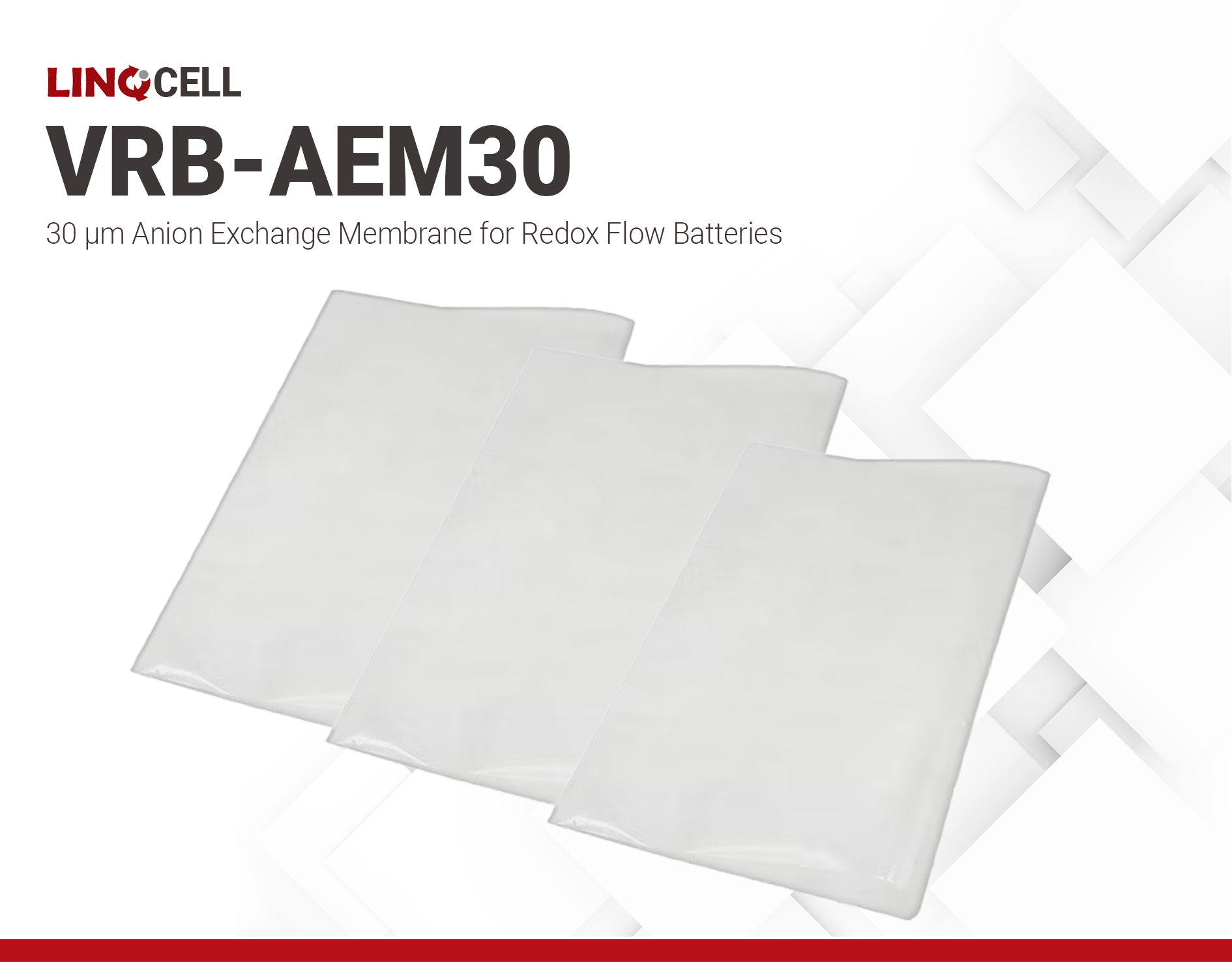LINQCELL VRB-AEM30
- Low ohmic resistance
- Excellent oxidative stability and chlorine resistance
- Designed as ion exchange membranes for redox flow batteries
Product Description
LINQCELL VRB-AEM30 is a 30-µm partially fluorinated anion exchange membrane without reinforcement. It has low ohmic resistance, excellent mechanical properties, low water uptake, and minimal dimensional swelling. VRB-AEM30 has high oxidative stability, resists chlorine, and remains stable in acidic environments (pH > 4). The recommended operating temperature is from room temperature to 50 °C. LINQCELL VRB-AEM30 is highly suitable for electrochemical applications that require exceptional oxidative stability and chlorine resistance, such as redox flow batteries operating with very harsh, aqueous acidic solutions.
Key Features and Benefits:
- Ultra-Low Ohmic Resistance: Minimizes energy losses and maximizes efficiency.
- Exceptional Oxidative Stability and Chlorine Resistance: Withstands harsh chemical environments, including exposure to chlorine.
- Minimal Water Uptake and Dimensional Swelling: Maintains stability and consistent performance over time.
Highly Recommended for:
- Vanadium-Redox-Flow Batteries (VRBs)
- Aqueous Acidic Redox-Flow Batteries.
LINQCELL VRB-AEM30 comes in different sizes to meet various device design requirements. Contact us for custom sizes or other specific requirements.
Technical Specifications
| Hydrolytic Properties | |||||
| Water Uptake | 30 % | ||||
| General Properties | |||||
| Appearance Appearance Appearance at room temperature. | Transparent film | ||||
| Basis Weight Basis Weight Basis weight refers to the weight measured in pounds off 500 sheets of paper in that paper’s basic sheet size. | 48 g/m2 | ||||
| Total Thickness Total Thickness Total thickness is taking into account all the films, coatings, adhesives, release liners and special layers and is the maximum thickness of a film or tape. | 30 μm | ||||
| Physical Properties | |||||
| Young's modulus | 800 MPa | ||||
| Mechanical Properties | |||||
| Elongation Elongation Elongation is the process of lengthening something. It is a percentage that measures the initial, unstressed, length compared to the length of the material right before it breaks. It is commonly referred to as Ultimate Elongation or Tensile Elongation at break. | 200 % | ||||
| |||||
Additional Information
LINQCELL VRB-AEM30 Properties
| Property | Value | Unit |
| Initial Form | Dry film with Cl–/MeOSO3– counter-ions | — |
| Backing Film | Polyethylene terephthalate (PET) | — |
| Conductivity, Cl– form | > 6 | mS⋅cm–1 |
| Area-specific Resistance, Cl– form | 0.5 | Ω•cm2 |
| Proton Transfer Rate | 0.00083–0.0013 | % |
| Ion Selectivity at 25 °C (0.1/0.5 m KCl) | >90 | mol⋅s–1m–2 |
| Swelling Ratio in H2O at 25 °C | <0.12 | — |
| Bubble Point in H2O at 25 °C | 3 | bar |



